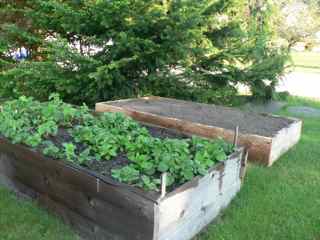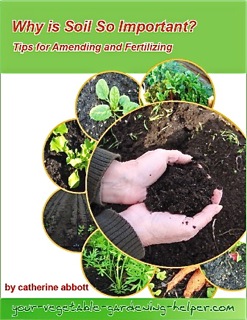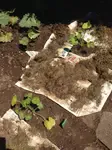What types of soil do you have?
Different types of soil that are rich in nutrients, easy to dig, hold their shape when moist and crumbles easily when it is ready to be planted are needed for a happy healthy vegetable garden.
It is important to consider what the soil composition is especially when choosing a new garden site.
Your vegetable plants need basic nutrients for good plant growth. These need to in the soil and accessible to the plant roots.
Soil composition means the proportion of sand, silt, clay and humus in the soil.
Four soil types:
Sandy soil
- in true form it is the exact opposite to clay soil
- particles are large and do not bind together
- warmest soil; can be a benefit for some vegetables
- does not hold water
- does not hold nutrients
Silt soil
- has intermediate size particles
- drains better than clay soil
- holds more nutrients than sandy soil
- lacking in humus
Clay soil
Loam soil
Most soils are a combination of all the above types, however your soil will probably lean towards one of them. This gives you a starting point.
Let me help you determine what your soil type is:
- put a small amount of soil in the palm of your hand
- add a bit a water to it
- rub some soil between your fingers and if it is: gritty it has high sand content soapy it is silty sticky and can be rolled into a thin rope it is clay soil
It is not necessary for your vegetable garden to have consistent soil over the whole area. Different vegetables require different amounts of heat, water and nutrients therefore varying types of soil are a good thing.
Do not worry if your soil it not the ideal loam. Soil can always be improved.
Soil testing is the next step in answering "Do you have healthy vegetable garden soil?"
Return from Types of Soil to Vegetable Garden Soil
Recent Articles
-
Organic Gardening soil amendments - List of material?
Aug 09, 25 10:57 AM
What materials are best used as organic gardening soil amendments? -
Tips for disease control in your vegetable garden
Jul 14, 25 11:15 AM
Easy tips for disease control to keep your vegetable growing its best. -
Joy of vegetable Gardening
Jul 14, 25 11:01 AM
Everything you need to know is right here to have Joy of Vegetable Gardening







